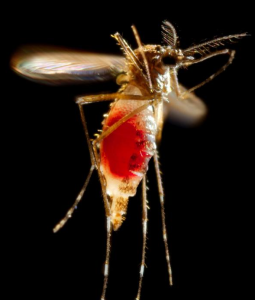NewsDesk @bactiman63
To monitor the increase in dengue, chikungunya and zika cases in the country, the Ministry of Health installed the Emergency Operations Center (COE Arboviroses), with the aim of developing strategies to control and reduce serious cases and deaths. The alert occurs due to the increase in the records of these diseases, such as dengue cases, which grew 43.8% until March this year, when compared to the same period last year. Chikungunya notifications increased by 97%.

We identified growth in some states, which makes us alert. We are already sending field teams to draw up a diagnosis of the situation in these areas and we are going to reinforce the monitoring of the scenario of arboviruses throughout the country. Our priority is to raise awareness among the population, so that we can control the spread of these diseases,” said Alda Maria da Cruz, director of the Department of Communicable Diseases at the Ministry of Health.
With the activation of the COE, officials will monitor the situation, with emphasis on dengue and chikungunya, to guide the execution of actions aimed at epidemiological and laboratory surveillance, assistance and vector control. The planning of actions and the coordinated response will be carried out jointly with states and municipalities.
Dengue
In 2022, between January and early March, 209,900 probable cases of dengue were reported. In 2023, the number jumped to 301,800, in the same period of time, an incidence of 141.5 cases per 100 thousand inhabitants. As for severe cases, 2,900 cases were recorded among all notifications. This number decreased when compared to the same period last year – around 3,800 registrations. So far this year, 73 deaths from the disease have been reported. Another 64 are still under investigation. In the same period last year, the total number of confirmed deaths was 172.
The region with the highest incidence of dengue in 2023 is the Midwest, with 254.3 cases per 100,000 inhabitants, followed by the Southeast, with 214.7 cases per 100,000 inhabitants, and the South, with 98.2 cases per 100 thousand inhabitants. Espírito Santo was the state with the highest increase in incidence rates, with 921.7 cases per 100,000 inhabitants, followed by Mato Grosso do Sul, with 432.5 cases per 100,000 inhabitants, and Minas Gerais, with 392.1 cases per 100,000 inhabitants.
Subscribe to Outbreak News TV on YouTube
Chikungunya
In 2023, also between January and early March, there were 43,000 probable cases of chikungunya, an increase of 97.1% when compared to the same period in 2022. One death was confirmed this year in Espirito Santo and another 13 are under investigation . Last year, in the same period, 14 deaths were confirmed.
The region with the highest incidence of the disease in 2023 is the Southeast, with 34.3 cases per 100,000 inhabitants, followed by the Northeast, with 13.8 cases per 100,000 inhabitants, and the North, with 13.1 cases per 100,000 inhabitants. population. Tocantins has the highest incidence, with 139.2 cases per 100,000 inhabitants, followed by Minas Gerais, with 129.0 cases per 100,000 inhabitants, and Espírito Santo, with 51.6 cases per 100,000 inhabitants.
- Ghana: Vaccines arrive following reports of measles outbreak
- Denmark reports additional cases of multi-resistant bacteria after Dicillin ingestion
- South Korea: RSV cases increase 2.2 times in one month
- Israel reports more polio cases
- Philippines reports 55 rabies deaths in first two months of 2023
- Avian influenza update in Argentina
- Taiwan reports 1st rabies cases in ferret badgers in Miaoli County
- Mexico reports more than 50 Mpox cases in two weeks
- Cuba: Histoplasmosis outbreak in Artemisa

